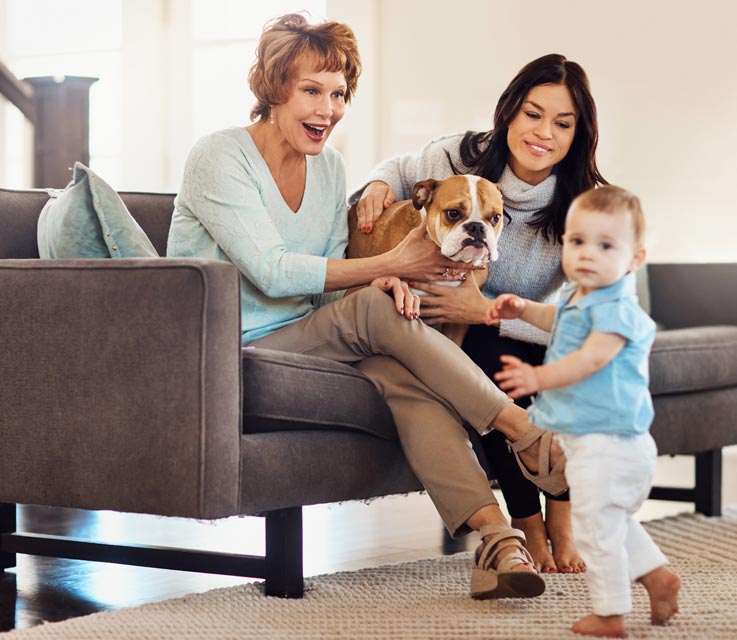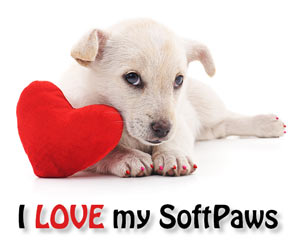Tips for Visiting Others' Homes with Your Dog

It's fun to take your dog to get-togethers and visits with your family and friends. However, there are some things you need to know and teach your dog before you do so.
House-Training Might Slip
Even if your dog is entirely house-trained at your house and doesn't have accidents, don't assume she'll be the same way at someone else's home. Remember that you've trained your dog specifically for your house, and she might not understand that all houses have the same rules.
When you visit someone else's house with your dog, be vigilant. Treat your dog as though she is still being house-trained until she's proven she understands she's not supposed to be going in this house either. Here are some ways to do that:
- Take your dog outside when you first arrive at the new house and give her the command you use for getting her to go.
- Give your dog lots of praise and a treat for going outside.
- Make sure you take your dog out right away after she eats or drinks in the visited home, and praise her for going outside when she does so.
- Take your dog out often, like you did when she was first potty training at your house.
Train Your Dog Not to Jump on People
If you're going to take your dog to parties and for visits to other people's homes, it's a great idea to first teach her not to jump on people. While it might be fine with the people in your home to have the dog jumping up to say hi, it might be quite bothersome or even dangerous to other people. For instance, someone whose skin is easily scratched and who might be at high risk for contracting infections, like an elderly or immune-compromised person, won't appreciate a dog jumping on their legs. Also, a dog that jumps might knock over and injure or scare small children.
If your dog has a tendency to jump on people, spend some time training her not to before you start taking her to others' homes. You can do that by teaching her to sit and wait for attention when she encounters new people. Take a look at this article for a step-by-step guide on how to do that: "How to Stop Your Dog from Jumping on People."
Work on Curbing Begging Behavior
If your dog has a begging habit, you'll want to curtail that before routinely taking her to other people's houses or parties and get-togethers. People who don't have dogs or whose dogs don't beg for human food might be upset by a dog that does beg.
You can help your dog learn not to beg by avoiding giving her human food. Try to time her dog food meals for when you are eating your meals, so she feels like part of the pack. You can learn more specific ways to deter begging behavior here: "Dog Begging Behavior."
Make Sure Your Dog Knows "Sit" and "Come"
The two most important commands your dog needs to know before you start taking her other places routinely are "sit" and "come." If your dog responds reliably to those commands, you will have much more control over her when she gets excited by new situations and people.
Clicker training is a great way to teach your dog to respond to commands, and once she knows what it means, you can take the clicker with you when you go to others' houses. That way, you'll be able to more quickly let your dog know when she's doing the right thing. It doesn't hurt to have some treats in your pocket.
Take a leash and collar or harness with you when you visit people or take your dog to parties. Remember that you can put her on the leash to gain more control or help her calm down anytime, even inside the house.
You can find more information on training your dog to respond to these two critical commands here: "How to Teach Your Dog to Sit" and "Teaching Your Dog to Come."
Consider Using Soft Paws®
When you are visiting someone's home with your dog, consider putting Soft Paws® nail caps on her before you go. These vinyl caps are applied to your dog's claws with non-toxic adhesive, and they can help prevent damage to your host's home and furniture. When your dog's excited or nervous, she might accidentally scratch the floor or purposely scratch at a door frame or carpeting. Soft Paws® can help minimize any damage your dog's claws might inadvertently cause.
You May Also Like These Articles:
Canine Body Language: What Is Your Dog Saying?
Dogs Are More Expressive When Humans Are Watching Them
Old Dog, New Tricks: How to Socialize an Older Dog
Why Does Your Dog Follow You to the Bathroom?
Let Sleeping Dogs Lie and They'll Learn Better
Disclaimer: This website is not intended to replace professional consultation, diagnosis, or treatment by a licensed veterinarian. If you require any veterinary related advice, contact your veterinarian promptly. Information at DogHealth.com is exclusively of a general reference nature. Do not disregard veterinary advice or delay treatment as a result of accessing information at this site. Just Answer is an external service not affiliated with DogHealth.com.
Notice: Ask-a-Vet is an affiliated service for those who wish to speak with a veterinary professional about their pet's specific condition. Initially, a bot will ask questions to determine the general nature of your concern. Then, you will be transferred to a human. There is a charge for the service if you choose to connect to a veterinarian. Ask-a-Vet is not manned by the staff or owners of DogHealth.com, and the advice given should not delay or replace a visit to your veterinarian.



